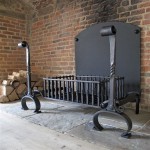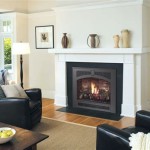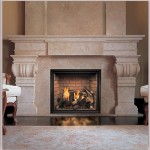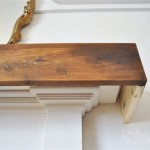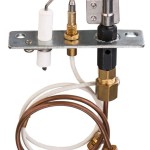Indoor Brick Fireplace Plans: A Comprehensive Guide
Indoor brick fireplaces have long been a cornerstone of residential architecture, providing warmth, ambiance, and a focal point for living spaces. Constructing a brick fireplace requires careful planning and adherence to specific guidelines to ensure safety, functionality, and aesthetic appeal. This article provides a comprehensive overview of indoor brick fireplace plans, covering essential considerations for design, construction, and code compliance.
Planning and Design Considerations
The initial phase of fireplace construction involves meticulous planning and design. This stage determines the overall look and functionality of the fireplace and ensures it integrates seamlessly with the home's existing structure and style. Several key factors must be considered during this phase.
Location: The placement of the fireplace is a critical decision. Factors to consider include the room's size and layout, proximity to exterior walls (for chimney access), and existing architectural elements. A central location often creates a natural gathering space, while placing a fireplace against an exterior wall simplifies chimney construction. Consideration should also be given to the impact on furniture placement and traffic flow within the room.
Size and Style: The size of the fireplace should be proportional to the room. A fireplace that is too large can overwhelm a small space, while one that is too small may be visually insignificant in a large room. Numerous brick styles and patterns are available, ranging from traditional red brick to more contemporary options. The chosen style should complement the home's overall architectural aesthetic. Design choices often involve decisions related to hearth size, firebox dimensions, and the inclusion of a mantle or other decorative elements.
Fuel Type: The choice of fuel (wood, gas, or electric) impacts the design and construction of the fireplace. Wood-burning fireplaces require a chimney for venting smoke and combustion gases, while gas fireplaces may require a smaller vent or direct vent system. Electric fireplaces do not require venting but need a reliable power source. Each fuel type has its own set of safety requirements and code regulations that must be adhered to.
Structural Integration: The fireplace's structural integration with the existing house is crucial. The weight of the brick, firebox, and chimney is substantial, and the floor and foundation must be able to support this load adequately. In many cases, this necessitates reinforcing the floor joists or constructing a dedicated foundation pad. A structural engineer should be consulted to ensure the structural integrity of the fireplace and the surrounding building.
Code Compliance: Before commencing construction, it is essential to obtain the necessary permits from local building authorities. Building codes dictate specific requirements for fireplace construction, including firebox dimensions, chimney height and construction, clearances to combustible materials, and ventilation requirements. Failure to comply with building codes can result in costly rework and potential safety hazards.
Essential Components and Construction Techniques
Once the design is finalized, the next step is to gather the necessary materials and employ proper construction techniques. The robustness and longevity of the fireplace depend on the quality of materials and the skill of the craftsman.
Foundation and Hearth: The foundation must be capable of supporting the entire weight of the fireplace and chimney. It typically consists of a concrete pad that extends below the frost line. The hearth, the non-combustible area in front of the firebox, protects the floor from sparks and embers. It is typically constructed of brick, stone, or tile and must extend a specified distance beyond the firebox opening, as dictated by building codes.
Firebox: The firebox is the chamber where the fire burns. It is constructed of firebrick, a refractory material that can withstand high temperatures without cracking or deteriorating. The firebrick is laid using refractory mortar, a specialized mortar designed for high-temperature applications. The firebox dimensions are critical and must be proportional to the size of the room and the expected fire size. A damper is typically installed above the firebox to control airflow and prevent heat loss when the fireplace is not in use.
Smoke Chamber and Smoke Shelf: The smoke chamber is the area above the firebox that channels smoke and gases into the chimney. It should be smoothly tapered to facilitate efficient draft. The smoke shelf, located at the base of the smoke chamber, prevents downdrafts from entering the firebox and disrupting the fire. These components are crucial for proper fireplace performance.
Chimney: The chimney is the vertical structure that vents smoke and combustion gases to the outside atmosphere. It must be constructed of durable, fire-resistant materials such as brick or concrete block. The chimney height is critical for creating adequate draft and preventing smoke from backing up into the house. Building codes specify minimum chimney heights based on roof pitch and proximity to nearby structures. The chimney should be lined with a fireclay flue liner to protect the masonry from the corrosive effects of combustion gases.
Clearances to Combustible Materials: Maintaining proper clearances to combustible materials is paramount for fire safety. Building codes specify minimum distances that combustible materials (e.g., wood framing, wall coverings) must be kept away from the fireplace and chimney. These clearances are intended to prevent fires from spreading through the building. Non-combustible materials, such as metal or cement board, can be used to provide additional protection.
Safety and Maintenance Considerations
Maintaining a safe and functional brick fireplace requires ongoing attention to safety and regular maintenance. These practices are crucial for preventing hazards and ensuring the fireplace operates efficiently.
Carbon Monoxide Detectors: Carbon monoxide (CO) is a colorless, odorless gas produced by incomplete combustion. Installing CO detectors near the fireplace and in sleeping areas is essential. These detectors provide an early warning of CO buildup, allowing occupants to evacuate before dangerous levels are reached.
Chimney Inspections: Regular chimney inspections are crucial for identifying potential problems, such as cracks, blockages, or creosote buildup. Creosote is a flammable substance that accumulates in the chimney as a byproduct of wood burning. A professional chimney sweep should inspect the chimney annually and perform cleaning as needed to remove creosote buildup and ensure proper draft.
Proper Fuel Handling: Storing firewood properly is important for preventing fires and pest infestations. Firewood should be stored outdoors, away from the house, and elevated off the ground to allow for air circulation. Only seasoned firewood should be burned in the fireplace, as green wood produces more smoke and creosote.
Fire Safety Practices: Never leave a fire unattended and always use a fire screen to prevent sparks from escaping the firebox. Keep flammable materials away from the fireplace, and ensure that a fire extinguisher is readily accessible. Educate all household members on fire safety practices.
Masonry Maintenance: Over time, the masonry of the fireplace and chimney may require maintenance. Cracks in the brick or mortar joints should be repaired promptly to prevent water damage and structural deterioration. Tuckpointing, the process of removing and replacing damaged mortar, can extend the life of the masonry.
Damper Operation: The damper should be opened fully before starting a fire and closed tightly when the fireplace is not in use to prevent heat loss. Ensure the damper operates smoothly and is free from obstructions. A malfunctioning damper can reduce fireplace efficiency and increase the risk of smoke spillage.
In summary, constructing an indoor brick fireplace involves careful planning, adherence to building codes, and the use of proper construction techniques. Regular maintenance and attention to safety are essential for ensuring the fireplace operates safely and efficiently for years to come. Consulting with qualified professionals, such as architects, structural engineers, and chimney sweeps, can help ensure a successful and safe fireplace installation.

01 Fireplace Detail Masonry Brick Indoor

Building An Electric Fireplace With Brick Facade

How To Build An Indoor Fireplace The Constructor

How To Build A Diy Built In Fireplace With An Electric Insert The Creative Mom

Home Dzine Tips On Building An Outdoor Fireplace Build A Backyard

Indoor Living And Fireplace Ideas Outdoor Greatrooms

Mortar Wash Brick Fireplace Makeover Dimples And Tangles
Diy Electric Fireplace Full Hearted Home

Brick Fireplace Design Installation Scarlett Fireplaces

How To Install Thin Brick Veneers On Your Fireplace
Related Posts

